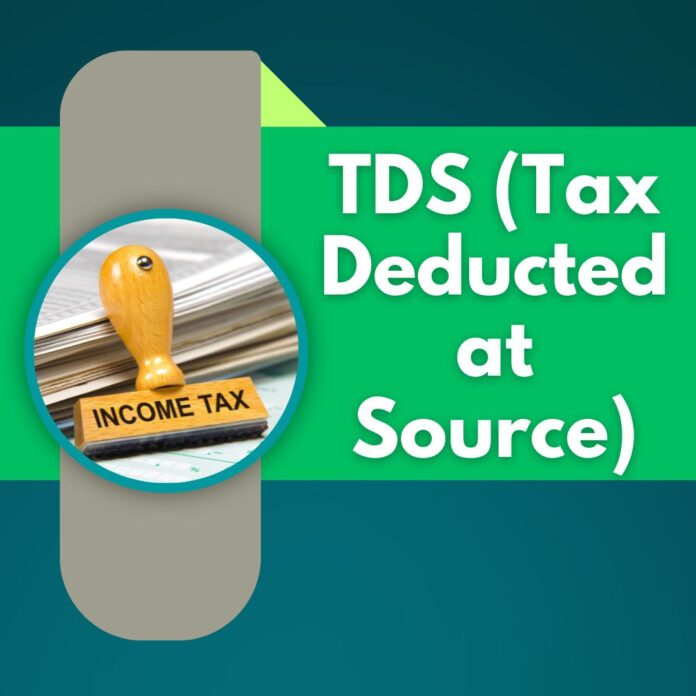GSTR-9 Annual Return Filing for FY 2023-24
This briefing document summarizes the key aspects of filing the GSTR-9 annual GST return for the financial year 2023-24, drawing from the provided “Summary.pdf” tutorial. It covers eligibility, exemptions, the importance of accurate record-keeping, error rectification, and the consequences of non-compliance.
I. Core Purpose and Nature of GSTR-9
The GSTR-9 serves as the annual GST return, consolidating and summarizing all transaction data from the monthly or quarterly GSTR-1 (outward supplies) and GSTR-3B (summary of outward supplies, inward supplies, ITC claims, and tax payments) returns. It acts as a “final composite return” and a “one-stop reconciliation platform,” ensuring data integrity and allowing for the detection of discrepancies. As a “comprehensive compliance checkpoint,” it is a critical tool for tax authorities to verify the correctness and completeness of annual GST data.
II. Filing Methods and Eligibility
- Filing Methods: GSTR-9 can be filed using both online and offline tools, providing flexibility for taxpayers.
- Eligibility: Generally applicable to all registered taxpayers.
- Exemptions:Taxpayers with an aggregate turnover less than ₹2 crores for FY 2023-24 may be exempted, subject to a Commissioner’s notification.
- Certain categories are explicitly excluded:
- Casual taxable persons
- Input service distributors
- Non-resident taxable persons
- E-commerce operators under TDS/TCS
- Nil Returns: Can be filed if turnover is less than ₹2 crores, with no transactions and no liability.
III. Importance of Accurate Record-Keeping
“Accurate maintenance of various registers and books of accounts is critical for GSTR-9 filing.” This is a “GST legal requirement” mandated by Section 35 and Rule 56. Key registers and their roles include:
- Sales Register: For outward supplies.
- Export Register: Essential for proper shipping bill details to facilitate export validation and refund processing, showcasing “data synchronization between GST and Customs systems.”
- Import Register: For import of goods and services (under Section 71B).
- Reverse Charge Mechanism (RCM) Register: For transactions where the recipient pays tax.
- Advances Register: For advances received.
- Stock Register: For inventory management.
- Input Tax Credit (ITC) Register: To track ITC claims.
“Accurate recording in these ledgers is essential because GSTR-9 filings heavily rely on these data sources for validation and audit checks.” “Ignorance or mismanagement can lead to mismatched returns, rejection, or penalties.”
IV. Error Rectification and Data Accuracy
GSTR-9 offers a “unique opportunity to correct errors, omissions, or mismatches arising in prior GSTR-1 and GSTR-3B filings, especially related to outward supplies data, tax liability, and ITC claims.” It is “the last chance to rectify errors made in monthly returns.”
Crucially, GSTR-9 “cannot be revised once filed,” emphasizing the need for “discipline and precision in data compilation and verification.” Taxpayers are encouraged to “conduct thorough reconciliations before submission, possibly integrating internal audits to mitigate future disputes with tax authorities.”
V. Specific Considerations for Exports and Imports
- Exports:Require “actual movement of goods outside India and receipt of payment in convertible foreign exchange.”
- “Proper shipping bill details” are significant for validation and refund processing, underscoring “technological integration aids in smooth refund processing and reduces malpractices.”
- “Exporters must ensure payments are received in convertible foreign currency; otherwise, supplies may not qualify as export, leading to disqualification of export benefits and liability to pay GST.”
- Imports: Tax applicability for imports and import of services under Section 71B are also clarified.
VI. Input Tax Credit (ITC) Management
- Eligibility: Depends on timely receipt of goods/services, issuance of valid tax invoices, and tax payment by suppliers.
- Reversal Mechanisms: Explained for scenarios like non-payment to suppliers within 180 days, and partial ITC claims when goods/services are used for exempt supplies or non-business purposes. “Stringent norms around ITC reversal on unpaid dues within prescribed timelines create both safeguards for government revenue and compliance challenges for taxpayers.”
VII. Consequences of Non-Compliance
“Failure to file GSTR-9 on time triggers penalty notices under Section 47.” “Non-filing or delayed filing can attract penalties and statutory notices.”
- Late Fees: Prescribed based on the turnover slab.
- Minimum: ₹25 per day per tax head.
- Maximum: 0.25% of turnover.
- The late fee structure “is designed to incentivize timely filing,” but “for small and medium businesses, even minimum fees can become a financial strain if unaware of deadlines.” This underscores “the importance of timely and accurate filing to avoid monetary burdens and scrutiny.” “Non-compliance may invite audits or notices, impacting business continuity.”
VIII. Overall Significance
The tutorial aims to be an “extensive knowledge resource” for taxpayers, tax consultants, and compliance professionals. It guides through “complex GST annual return requirements, documentation, and procedural nuances critical for the financial year 2023-24,” ultimately equipping taxpayers with “essential knowledge to seamlessly navigate annual GST compliance, minimize errors, and strategically manage tax liabilities.”
What is GSTR-9 and what is its purpose?
GSTR-9 is the annual Goods and Services Tax (GST) return that consolidates all the data from a taxpayer’s monthly or quarterly GST returns, specifically GSTR-1 (outward supplies) and GSTR-3B (summary of inward/outward supplies and ITC claims). Its primary purpose is to provide a comprehensive summary of a taxpayer’s GST activities for the entire financial year (e.g., 2023-24), acting as a final composite return and a crucial checkpoint for tax authorities to verify the accuracy and completeness of the annual GST data.
Who is required to file GSTR-9, and are there any exemptions?
Generally, most registered taxpayers are required to file GSTR-9. However, there are specific exemptions. Casual taxable persons, input service distributors, non-resident taxable persons, and e-commerce operators under TDS/TCS are excluded from filing. Additionally, for the financial year 2023-24, taxpayers with an aggregate turnover of less than ₹2 crores may be exempted from filing GSTR-9 based on a Commissioner’s notification. Nil returns can be filed by taxpayers with turnover below ₹2 crores who have no transactions and no tax liability.
Why is accurate record-keeping crucial for GSTR-9 filing?
Accurate maintenance of various GST registers and books of accounts is critically important for GSTR-9 filing. Section 35 and Rule 56 of GST law mandate maintaining proper books, including registers for outward supplies, advances, stock, Input Tax Credit (ITC), import/export transactions, and Reverse Charge Mechanism (RCM). These records serve as the primary data sources for compiling GSTR-9, and their accuracy is essential for validation, audit checks, and reconciling transactions. Mismanagement or ignorance of proper bookkeeping can lead to mismatched returns, rejections, or penalties.
Can errors made in monthly GST returns be corrected through GSTR-9?
Yes, GSTR-9 provides a unique opportunity to correct errors, omissions, or mismatches that may have occurred in prior monthly or quarterly GSTR-1 and GSTR-3B filings. This is particularly useful for rectifying data related to outward supplies, tax liability, and ITC claims. However, it’s crucial to exercise extreme caution because GSTR-9 cannot be revised once it has been filed. Therefore, taxpayers must ensure thorough data accuracy and conduct comprehensive reconciliations before submission.
What are the consequences of non-filing or delayed filing of GSTR-9?
Failure to file GSTR-9 on time can lead to significant consequences, including penalty notices issued under Section 47. Late fees are prescribed based on the taxpayer’s turnover slab, ranging from a minimum of ₹25 per day per tax head to a maximum of 0.25% of the turnover. This penalty structure is designed to incentivize timely filing, but even minimum fees can create a financial strain, especially for small and medium businesses. Non-compliance can also invite audits or scrutiny from tax authorities, potentially impacting business continuity.
How do export and import transactions specifically impact GST returns and GSTR-9?
For exports of goods and services, the actual movement of goods outside India and the receipt of payment in convertible foreign exchange are crucial. Proper shipping bill details are significant for export validation, refund processing, and the synchronization of data between GST and Customs systems. Failure to receive payment in convertible foreign currency can disqualify supplies from being treated as exports, leading to GST liability. Similarly, imports and import of services under Section 71B have specific tax applicability that must be accurately reflected in the returns.
What is the significance of Input Tax Credit (ITC) management in the context of GSTR-9?
ITC management is vital for accurate GSTR-9 filing. ITC eligibility depends on the timely receipt of goods/services, the issuance of valid tax invoices, and the tax payment by suppliers. The tutorial elaborates on ITC reversal mechanisms, such as when payment is not made to suppliers within 180 days, or when goods/services are used for exempt supplies or non-business purposes. These stringent norms around ITC reversal safeguard government revenue while posing compliance challenges, pushing taxpayers to maintain timely payments to claim rightful credits without reversal.
What filing methods are available for GSTR-9, and what steps are involved?
Both online and offline tools are available for filing GSTR-9. The filing process involves consolidating data from GSTR-1 and GSTR-3B, cross-referencing tables, and rectifying any data discrepancies. Accurate invoicing, proper use of credit and debit notes, and adjustments for tax liability are all part of the process. The tutorial provides a step-by-step demonstration of these procedures to enhance ease of compliance, emphasizing the importance of thorough reconciliation before the final, non-revisable submission.
GSTR-9 Annual GST Return: Comprehensive Study Guide
I. Quiz: Short Answer Questions
Instructions: Answer each question in 2-3 sentences.
- What is the primary purpose of GSTR-9, and what monthly/quarterly returns does it consolidate?
- Name three categories of taxpayers who are generally exempt from filing GSTR-9.
- Why is accurate maintenance of various GST registers (e.g., sales, ITC, RCM) considered critical for GSTR-9 filing?
- Explain the concept of a “nil return” for GSTR-9 in terms of turnover and transactions.
- What are the consequences of non-filing or delayed filing of GSTR-9, as mentioned in the source material?
- How does GSTR-9 serve as an “error rectification window” for taxpayers?
- What specific conditions must be met for export transactions to qualify for GST benefits, particularly concerning payment?
- Briefly explain one scenario where Input Tax Credit (ITC) might be subject to reversal according to GST norms.
- Describe how the late fee structure for GSTR-9 is determined, and what is its intended effect?
- Why is it emphasized that GSTR-9 cannot be revised once filed, and what does this imply for taxpayers?
II. Answer Key (for Quiz)
- GSTR-9 is the annual GST return that consolidates all outward and inward transaction data, ITC claims, and tax payments for the year. It primarily summarizes data from GSTR-1 (outward supplies) and GSTR-3B (summary of inward/outward supplies, ITC, and tax payments).
- Casual taxable persons, non-resident taxable persons, and input service distributors are generally exempt from filing GSTR-9. Additionally, taxpayers with an aggregate turnover less than ₹2 crore may also be exempted based on commissioner’s notification.
- Accurate maintenance of GST registers is critical because GSTR-9 filings heavily rely on these data sources for validation and audit checks. These registers serve as the backbone for reconciling transactions and ensuring data integrity for the annual return.
- A “nil return” for GSTR-9 can be filed by taxpayers whose aggregate turnover is less than ₹2 crores for the financial year. This applies if they have had no outward supplies, no inward supplies, no tax liability, and no ITC claims during the entire year.
- Non-filing or delayed filing of GSTR-9 can trigger penalty notices under Section 47. It also incurs late fees, which are prescribed based on the taxpayer’s turnover slab, ranging from a minimum per day per tax head to a maximum percentage of turnover.
- GSTR-9 provides a unique opportunity to correct errors, omissions, or mismatches that arose in prior monthly filings like GSTR-1 and GSTR-3B. This allows taxpayers to reconcile and rectify discrepancies, especially concerning outward supplies data, tax liability, and ITC claims.
- For export transactions to qualify for GST benefits, goods must physically move outside India, and payment must be received in convertible foreign exchange. Proper shipping bill details are also crucial for export validation and refund processing.
- Input Tax Credit (ITC) might be subject to reversal if the taxpayer fails to pay the supplier within 180 days from the date of the invoice. This mechanism safeguards government revenue and encourages timely payments to suppliers.
- The late fee structure for GSTR-9 is based on the turnover slab of the taxpayer, with fees ranging from a minimum per day per tax head to a maximum percentage of turnover. This structure is designed to incentivize timely filing and deter delays.
- GSTR-9 cannot be revised once filed, emphasizing the need for discipline and precision in data compilation and verification. This restriction compels taxpayers to conduct thorough reconciliations and ensure data accuracy before submission to mitigate future disputes.
III. Essay Format Questions
- Discuss the strategic importance of accurate bookkeeping and the maintenance of various GST registers (e.g., sales, ITC, RCM, export/import) in the context of GSTR-9 filing. How do these registers contribute to data integrity and compliance?
- Analyze how GSTR-9 functions as a “comprehensive compliance checkpoint” for tax authorities. Explain the benefits it offers to taxpayers in terms of error rectification, and conversely, what are the significant risks if the return is filed inaccurately due to its non-revisable nature?
- Evaluate the various exemption criteria for filing GSTR-9. Discuss how these exemptions aim to reduce the compliance burden for certain categories of taxpayers, and consider any potential implications for tax administration or revenue collection.
- Examine the consequences of non-compliance with GSTR-9 filing requirements, focusing on penalties, late fees, and statutory notices. How does the prescribed late fee structure attempt to encourage prompt filing, and what challenges might it pose, particularly for small and medium businesses?
- Detail the specific considerations for export and import transactions within the GSTR-9 framework. Discuss the role of foreign exchange realization and the integration of Customs and GST portals (like ICEGATE) in ensuring compliance and facilitating benefits for exporters.
IV. Glossary of Key Terms
- GSTR-9: The annual Goods and Services Tax (GST) return that consolidates all outward supplies, inward supplies, Input Tax Credit (ITC) claims, and tax payments for a financial year.
- GSTR-1: A monthly or quarterly return filed by registered taxpayers to declare details of their outward supplies (sales) of goods or services.
- GSTR-3B: A monthly summary return filed by registered taxpayers to declare summary details of outward supplies, inward supplies liable to reverse charge, Input Tax Credit (ITC) availed, and tax payable.
- Input Tax Credit (ITC): The credit taxpayers receive for the GST paid on purchases of goods or services used for business purposes, which can be offset against their output GST liability.
- Reverse Charge Mechanism (RCM): A system in GST where the recipient of goods or services is liable to pay tax, rather than the supplier.
- Nil Return: A type of return filed when a taxpayer has no business activity, no tax liability, no sales, and no purchases during the filing period. For GSTR-9, this applies to taxpayers with turnover below ₹2 crores with no transactions or liability.
- Section 47: A section of the GST law that pertains to penalties for non-filing or delayed filing of GST returns.
- Aggregate Turnover: The total value of all taxable supplies, exempt supplies, exports of goods and/or services, and inter-state supplies of persons having the same Permanent Account Number (PAN), computed on an all-India basis.
- Casual Taxable Person: A person who occasionally undertakes transactions involving the supply of goods or services or both in the course or furtherance of business, whether as principal, agent, or in any other capacity, in a State or Union territory where he has no fixed place of business.
- Non-Resident Taxable Person: Any person who occasionally undertakes transactions involving the supply of goods or services or both, whether as principal, agent, or in any other capacity, but who has no fixed place of business or residence in India.
- Export of Goods/Services: The act of sending goods or providing services from India to a place outside India, generally requiring payment in convertible foreign exchange for services.
- Shipping Bill: A document required by customs authorities for the export of goods, providing details of the goods being exported and their destination.
- ICEGATE: Indian Customs Electronic Commerce/Electronic Data Interchange (EC/EDI) Gateway, the national portal for filing import and export declarations electronically.
- Credit Note: A document issued by a supplier to a recipient to reduce the value of a previously issued tax invoice, typically for sales returns, goods damage, or price adjustments.
- Debit Note: A document issued by a supplier to a recipient to increase the value of a previously issued tax invoice, typically for price increases or under-invoicing.




